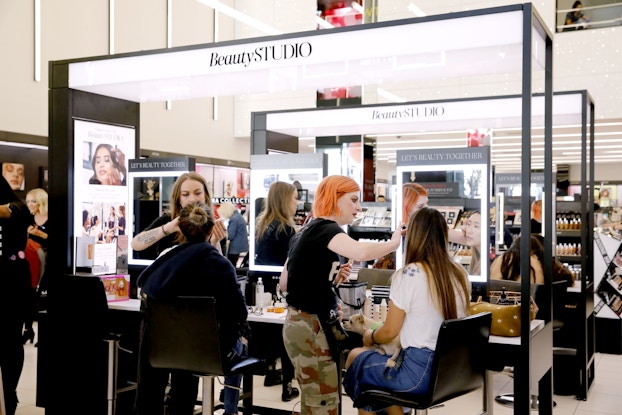
Why it matters:
- Sephora, as an e-commerce pioneer, faced a problem that is becoming increasingly common for companies – an outdated technology platform.
- Speed in launching new e-commerce features is crucial due to rapidly changing consumer demand.
- Retailers like Sephora are looking for solutions that will allow them to present a unified shopping experience across many channels, scale up for busy periods, and add more personalized offers and content.
Beauty retailer Sephora has been a digital innovator since 1999, when it launched its e-commerce website. Since then, it has been ahead of much of the retail pack with its omnichannel loyalty program, user-generated online content, social selling, and other cutting-edge e-commerce tools.
But the pandemic showed Sephora, along with the rest of the retail world, that it needed an e-commerce platform that could react immediately to rapidly changing consumer demands.
The platform Sephora had been using since 1999 was working well, but the time and effort involved in adding new features “was limiting some of the innovation we needed to do,” Sree Sreedhararaj, Chief Technology Officer of Sephora, told CO-—.
“We needed a platform that allows us to innovate at scale,” he said. “When I say scale, it’s about the speed and agility to market, while at the same time giving a seamless experience to the customers.”
The retailer, Sreedhararaj said, needed a tech platform that lets Sephora customers, now and in the future, shop anywhere, anytime, and that allows Sephora to pivot quickly as new shopping channels are created.
Sephora recently decided to replace its existing system with the commerce platform created by tech company commercetools. It will be transitioning to the new platform over the next two years.
The switch to commercetools gives Sephora the ability to utilize cutting-edge MACH architecture technology principles, which are designed to make it easier for companies to add or replace tech components in the future and respond rapidly to changing demand.
MACH architecture stands for microservices-based, API-first, cloud-native, headless. Sreedhararaj spelled out for CO— how each of those attributes are essential for Sephora’s digital future.
We needed a platform that allows us to innovate at scale. When I say scale, it’s about the speed and agility to market, while at the same time giving a seamless experience to the customers.
Sree Sreedhararaj, Chief Technology Officer, Sephora
Microservices-based: Enabling small tech changes with ease
This will allow Sephora, going forward, to modularize its digital technology into small components that can be changed, or swapped out, without having to upgrade the entire system. That will allow the retailer to implement changes much more quickly.
The modular components approach gives a retailer, in effect, the ability to “change the propeller while the plane is in motion,” Sreedhararaj said. With modular components, “You can say, ‘I have four propellers. I am just changing one of them and seeing how the plane responds.’”
[Read: 5 Post-COVID Economy Tech Trends Driving Sales]
API-first, for a seamless clicks-meets-bricks shopping experience
APIs – application program interfaces – allow different software components to talk to each other. An API-first tech solution gives Sephora the ability to deliver “the same experiences across all the channels — store, online, mobile, Instagram, or [via] third-party partners,” Sreedhararaj said. “That seamlessness is what API-first gives us.”

Cloud-native, so ‘we can scale up very easily’ amid peak demand
This will let Sephora scale up for times of peak shopping demand, and scale back for slower times.
“Without cloud technology, we had been purchasing hardware for future growth,” a process that can be painful for a retailer that is not in the hardware business, Sreedhararaj said. In the past, Sephora had to purchase excess computing capacity to meet holiday season demand. “With the cloud, we can scale up very easily, and bring it down to the standard range after the [shopping] peak so you can have better cost optimization and ability to scale at speed,” he said.
[Read: 5 Tech Trends Changing the Way We Buy Fashion and Food to Home Goods and Travel Jaunts]
Headless tech to personalize the customer experience
Headless tech architecture separates the front-end user experience — for example, content on a web page or mobile app — from the back-end technology, allowing a retailer to add content more quickly, personalized offers, or buying experiences.
“You need that speed and agility to change the front end – the user experience – rather than waiting for the back end to catch up,” Sreedhararaj said.
The return on investment: Speed, agility — and fewer missed business opportunities
The technology switch will provide a return on investment in terms of time and expense saved on platform upgrades, Sreedhararaj said, but it should also be viewed in terms of the “opportunity cost” of not making the change.
If, for example, consumers demand a new service and it takes a year to develop software or an upgrade to deliver it, “by that time the consumer may be looking for something else and you may be launching something that is pretty much outdated,” he said. “That is opportunity cost.”
More and more retailers, Sreedhararaj, are choosing a MACH-based approach to their digital commerce, “because they know they are behind in terms of speed and agility.”
Sephora, he said, is making the change in order to remain at the forefront of retail tech. “We need to be keeping up with the market in terms of technology so we are not bottlenecked in the future and can innovate faster than anybody else.”
CO— aims to bring you inspiration from leading respected experts. However, before making any business decision, you should consult a professional who can advise you based on your individual situation.
Follow us on Instagram for more expert tips & business owners’ stories.
CO—is committed to helping you start, run and grow your small business. Learn more about the benefits of small business membership in the U.S. Chamber of Commerce, here.
CO— Exclusives: Insider Strategies
How the buzziest brands and hottest startups are solving today's biggest business challenges. CO— brings you advice from startup founders and top executives for thriving in a new world.








